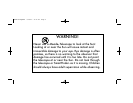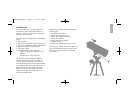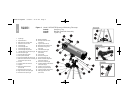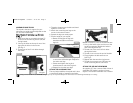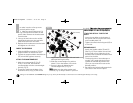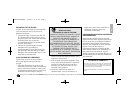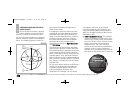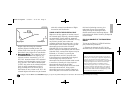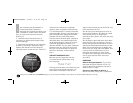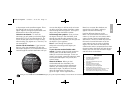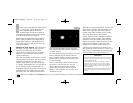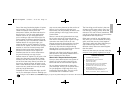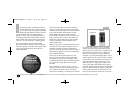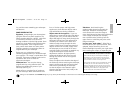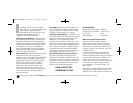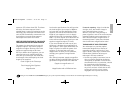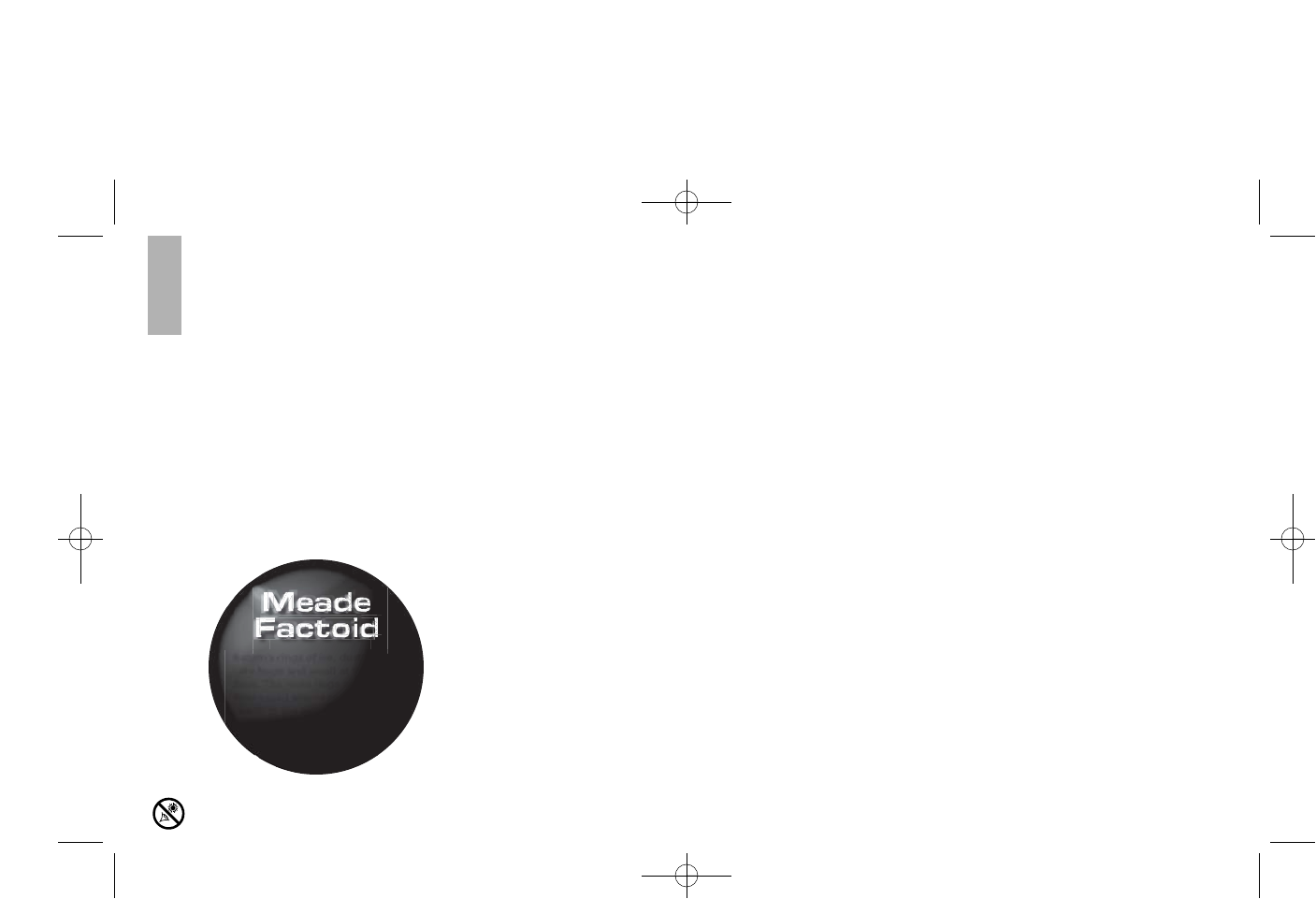
with-mounting may be rotated in a
horizontal direction. Rotate the
telescope until it points due North. Use
a compass or locate Polaris, the North
Star, as an accurate reference to North
(See Fig. 7).
2. Level the mount with the horizon, if
necessary, by adjusting the heights of the
three tripod legs.
3. Determine the latitude of your observing
location by checking a road map or atlas.
Release the latitude lock (9) and tilt the
telescope mount so that the star "Polaris" is
centered in the telescope's viewfinder
eyepiece, then re-tighten the latitude lock.
4. If the above steps (1-3) were performed
with reasonable accuracy, your telescope is
now sufficiently well-aligned to the North
Celestial Pole for visual observations.
Once the mount has been polar-aligned as
described above, the latitude angle need
not be adjusted again, unless you move to
a different geographical location (i.e. a
different latitude). The only polar alignment
procedure that you need to perform each
time you use the telescope is to point the
polar axis due North, as described in
step 1.
THE MOST IMPORTANT RULE
We have one very important rule that
you should always follow when using
your telescope:
Have Fun!
Have a good time when you’re observing. You
may not know everything that there is to
know about a telescope or what all the
8
Saturn’s rings of ice, dust and gas
are huge and small at the same
time. The main rings are so large
they could almost reach from the
earth to the moon. But they are
only about a half of a mile
(just a few city blocks)
wide.
sights in the universe are, but that’s OK. Just
point and observe at first.
You will enjoy your telescope even more as
you learn more about it. But don’t be scared
off by difficult terms or complicated
procedures. Don’t panic! Just relax and enjoy
your scope.
You will begin to grow and learn more about
astronomy the more you observe. Go to the
library and read some books about the stars
and planets. Read about astronomers of old.
Many of them had telescope no bigger than
the one you are using right now. Galileo, who
is one of the first astronomers to use a
telescope, discovered four of the moons
of Jupiter with a telescope about the same
size as yours (and his didn’t even focus
very well!).
OBSERVING
Observe during the daytime: Try out your
telescope during the daytime at first. It is
easier to learn how it operates and how to
observe when it is light.
Pick out an easy object to observe: A
distant mountain, a large tree, a lighthouse
Looking at or near the Sun will cause irreversible damage to your eye. Do not point this telescope at or near the Sun. Do not look through the telescope as it is moving.
Meade114EQASTR 3/28/07 9:33 AM Page 10



